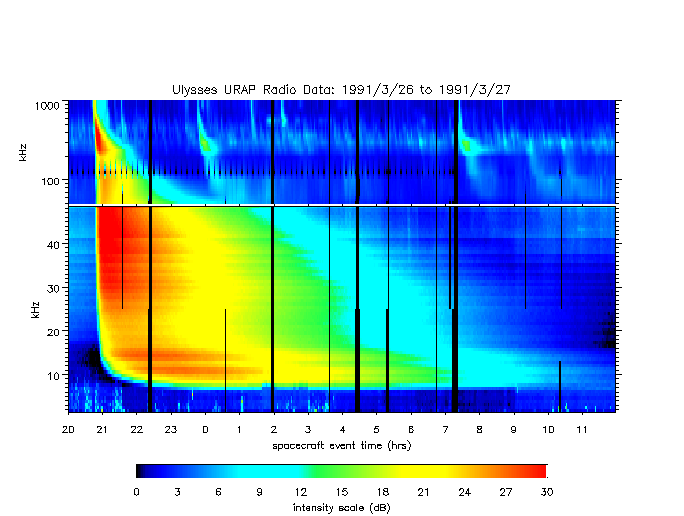

3.2 Use the following procedure to determine the electron density used in producing the thermal bremsstrahlung spectrum plot in the lecture:
3.3 The above-referenced spectrum is a two-layer spectrum (chromosphere and corona). In this problem you will calculate and plot the free-free (bremsstrahlung) brightness temperature spectrum of a three-layer atmosphere consisting of:
Layer 1 (bottom layer, chromosphere): Te = 10,000 K, ne = 1013 cm-3, L = 1000 km
Layer 2 (middle layer, hot corona): Te = 2 x 106 K, ne = 1010 cm-3, L = 10,000 km
Layer 3 (top layer, cooler, overlying loops): Te = 5 x 105 K, ne = 109 cm-3, L = 70,000 km
(a) First, estimate the turn-over frequency for each case, by setting τ = 1 as in the above problem and solving for ν. You should find that the chromospheric layer has a very high (10 THz) turn-over frequency. Take a little time to think about what you might expect the spectrum to look like, before doing any calculation (you do not have to write this in your homework, although you may if you wish).
(b) Now use IDL or Python to calculate the spectrum of each layer, using equation (8) of the lecture to calculate tau, and equation (6) to calculate the corresponding brightness temperature. The Tb from a lower layer will form the To of the next layer up. Plot all three spectra on a log-log plot, with frequency ranging from 109 - 1011 Hz (1 -100 GHz), and brightness temperature ranging from 103 - 107 K. The second spectrum should look like the one in the lecture. Discuss the third spectrum in terms of how it behaves at low frequencies, and at higher frequencies. Why does the third spectrum lie slightly above the second spectrum at higher frequencies? Why does it lie considerably below the second spectrum at low frequencies?